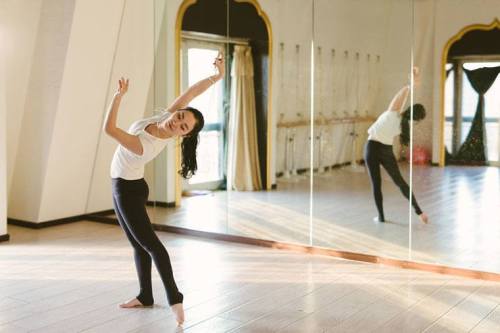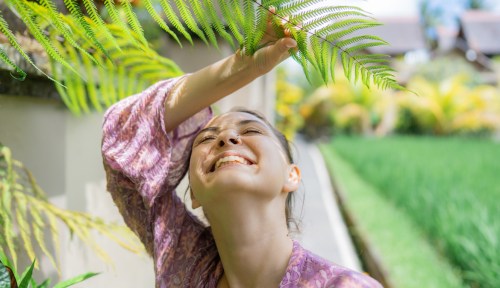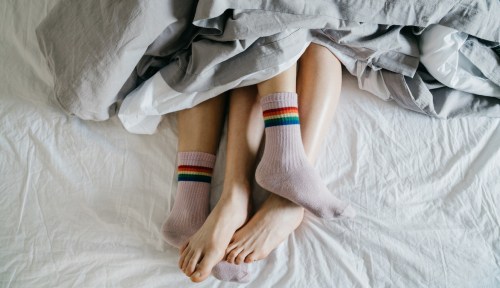If you’ve never heard of ecstatic dance, you’re not alone. (And no, I’m not talking about that moment when the DJ plays Lizzo’s Good as Hell.) Think of ecstatic dance as dance cardio’s more free-spirited cousin. Yes, it’s common in spiritual communities, but don’t worry, it doesn’t require Wild Wild Country levels of commitment. The experience of a ecstatic dance, which has been around for thousands of years, can actually be incredibly beneficial for the mind, body, and spirit. And it happens to be a whole lot of fun.
“The first time I experienced ecstatic dance, I felt like a portal of new expression opened up,” says Cara Patton, who does ecstatic dancing once a week in her home city of Eugene, Oregon. “As a kid, I took ballet lessons and I was never quite able to follow the moves, and I sort of wrote off dancing. But the great thing about ecstatic dance is that I have complete freedom to move however I want.”
Patton adds that the ecstatic dance community emphasizes consent and ways to nonverbally express boundaries, which she loves. “I enjoy this way of movement so much that I’ll be hosting a special ecstatic dance session at my wedding this summer.”
But how does it work, exactly? Let’s take a closer look.

Inside an ecstatic dance class
Ecstatic dance ceremonies are held regularly all over the US (check out a few of them here), and it’s safe to say that no two are the same. Sunday mornings are an especially popular time to engage in an ecstatic dance ceremony, according to Patton, and they’re sober: No alcohol or drugs. And no cellphones, either—so if you’re looking for a ‘Gram-worthy shot, you won’t be getting it at an ecstatic dance ceremony.
Ecstatic dance ceremonies are held in auditoriums, yoga studios, dance halls—really anywhere the organizers want to hold them—and people typically come in, remove their shoes, and form a circle where they all hold hands.
It’s all about inclusivity, meaning people of all ages, sizes, and abilities attend these ceremonies.
The music is usually electronic, with jungle beats mixed in. Each ceremony usually has 50 or so people, and after the introductions, people are encouraged to move however they feel like moving. In other words, there are no steps to follow: Just a rhythm to surrender yourself to.
The dance is entirely improvisational, and the hope is that by the end of the session the dancers feel more spiritually in tune with themselves.
Another great thing about ecstatic dance? It’s all about inclusivity, meaning people of all ages, sizes, and abilities attend these ceremonies. According to Patton, it’s not rare to see people in wheelchairs expressing themselves through ecstatic dance.
Your body on (dance) ecstasy
Since ecstatic dance is a form of movement, it gets the endorphins flowing. And it’s common to experience a bit of a high during an ecstatic dance ceremony (similar to a runner’s high), experts say, especially since the movement is so fast and free-flowing.
Another benefit of ecstatic dance is the community aspect. Patton says people often make friends at ecstatic dance ceremonies—especially if they attend them regularly—and studies show that feeling a strong sense of community is beneficial to happiness.
It’s common to experience a bit of a high during an ecstatic dance ceremony (similar to a runner’s high).
And if you’re looking to get in touch with your spiritual side, ecstatic dance is an excellent way to make that happen. The entire ceremony is spiritual from start to finish, and most people report leaving feeling connected to a higher sense of being.
While ecstatic dance isn’t for everyone, don’t let the hippie-ish aspect deter you. It just might fill you with joy and make you feel (at least a skosh) more spiritually enlightened—plus, you may even make some new friends along the way.
Sign Up for Our Daily Newsletter
Get all the latest in wellness, trends, food, fitness, beauty, and more delivered right to your inbox.
Got it, you've been added to our email list.










